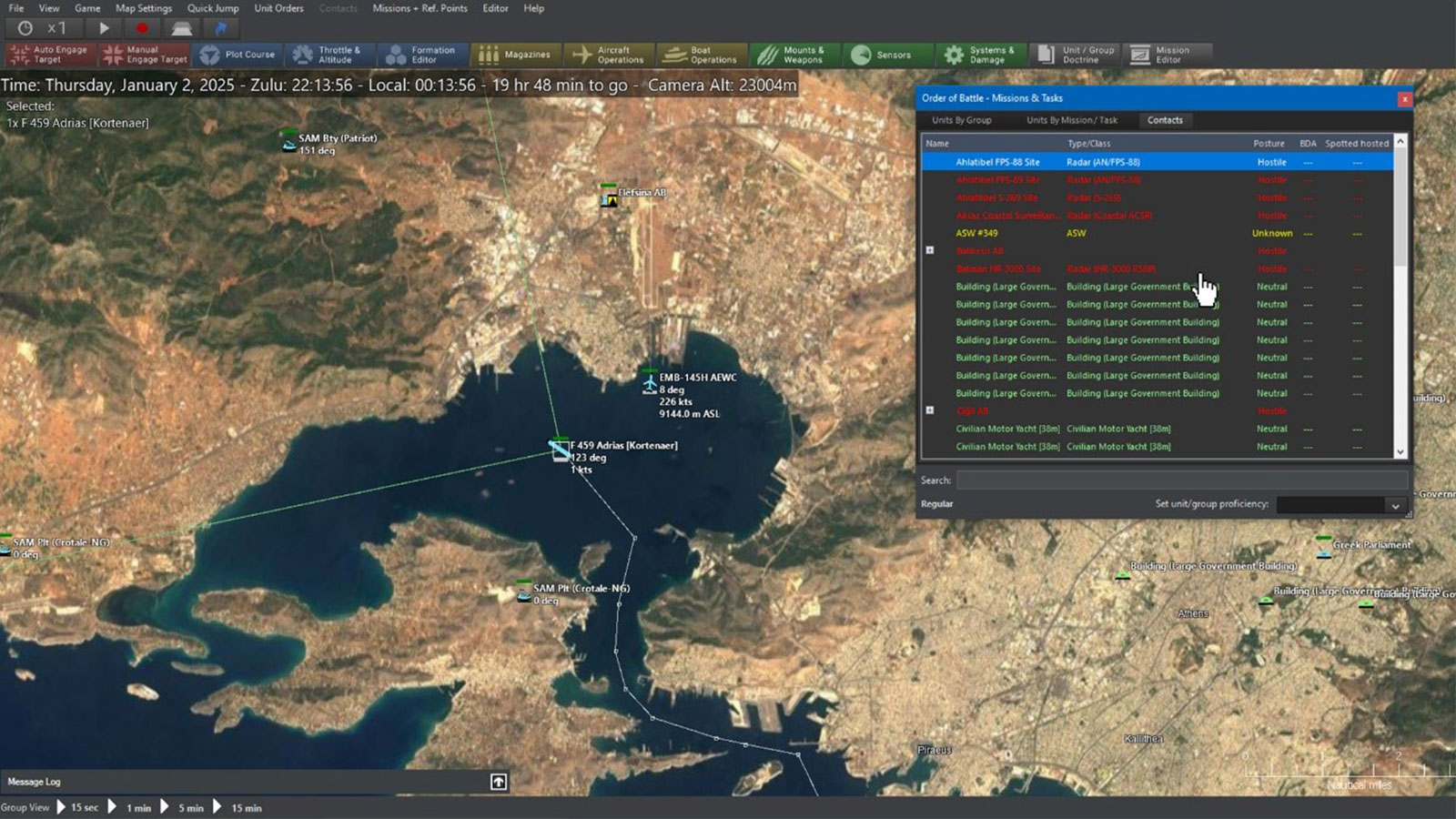Can Artificial Intelligence Apply Gaming to Military Strategy?

By Albert McKeon
Games aren’t always just games. Games themselves provide an understanding of how contestants strategize, react to unexpected challenges and avoid costly consequences. At the heart of every good game, there’s a game within the game.
The study of gaming might be as old as gaming itself, but there are limits to how much information the naked eye can discern. That's why Northrop Grumman hopes to solve the mysteries of games by using artificial intelligence (AI) to glean insight that's out of reach of human observation.
This year, Northrop Grumman landed a contract to apply AI models in "Gamebreaker," a U.S. Defense Advanced Research Projects Agency (DARPA) program. Deploying AI in a real-time war game called "Command," Northrop Grumman developers hope to find any unfair advantages that give friendly forces an edge. Knowing the ‘broken’ states of the game can create an imbalance that allows a player to catch opponents off guard, a methodology that could then be applied to other games — and maybe, eventually, real-life military strategy.
“Wargaming with game technology and AI, not to be confused with traditional tabletop exercises, really allows us to rapidly explore strategies and optimize for tactics selection, fleet composition and mission outcomes,” said Erin Cherry, a program manager for Northrop Grumman who works on Gamebreaker.
She added, “This is incredibly important if our military shifts to a large number of smaller platforms. That would change the way that we fight, and this type of wargaming will help us explore strategies, compositions and orders of battle.” This concept of speed and amount of data coming at commanders in military is becoming increasingly important in supporting command and control.
DARPA awarded the Gamebreaker contract to Northrop Grumman in May 2020 and now Erin Cherry, Ryan McKendrick and Bradley Feest and other colleagues are using AI models to discover the edge found in a game.

Erin Cherry, Ph.D.
Program Manager

Ryan McKendrick, Ph. D.
Staff Cyber Systems Engineer & Technical Fellow

Bradley Feest
Senior Principal Data Scientist
A Game Within a Game
Around the time that Cherry discussed with DARPA Gamebreaker program managers about how Northrop Grumman could help, a colleague was finding imbalance in a car racing video game.
Ryan McKendrick, a cognitive scientist and Northrop Grumman Technical Fellow, optimized the parameters of the cars he drove in a video game he plays recreationally. By tweaking various aspects of his vehicle, he was able to reach a top performer status because he identified a way to gain an unfair advantage. It wasn’t long before McKendrick had an epiphany that connected what DARPA wanted to achieve with its gaming project: He could apply his optimization techniques, with the help of AI, to Gamebreaker.
“Anyone could have found these parameterizations of the car,” McKendrick said. “I developed a deeper knowledge of what to do. I had access to information that others might not have had.”
DARPA awarded the Gamebreaker contract to Northrop Grumman in May, and now McKendrick, Cherry and other colleagues are using AI models to discover the edge found in a game. Their team works closely with two companies , Hazardous Software and Slitherine Software's Matrix Games, to model and break the natural balance within a highly complex war simulator environment called “Command: Modern Operations.”
They’ve created their own game within the game of Command, introducing more than 200 quadrillion options that aim to find causal models within the game which can be used to create advantages. “A lot of the platform is based in reality, and we took that and made it into a chess game,” McKendrick said.
On top of the usual play of Command, the team added layers of more offensive capabilities with bombers, submarines, and surface-to-air and Tomahawk missiles. The additions introduce complexity to stretch the limits of “Command” so that the AI models can figure out the many unfair ways to play, keeping in mind the potential requirements of customers to incorporate data from a wide variety of sources.

Improving Military Strategy with Artificial Intelligence
“Another impact that might not be as obvious is improvements to planning,” Cherry said. “Military planners often make decisions based on their extensive experience and even bias. It is my hope that a methodology to identify ways to create imbalance will lead to new insights for planners.”
McKendrick added, “We're trying to build a tool that augments a human commander’s ability to make intelligent decisions in a large and complex field while showing them why they're making those decisions.”
The artificial intelligence models of Gamebreaker could be used in other games, he said. “Fundamentally, it's the methodology. As long as you know the knobs to tweak, you can apply our process.”
More Innovation Stories
Read all stories about advanced technology and innovation >>

Applying AI to Systems Thinking: Every Engineer Has a Story

Digital Twins Facilitate Program Success
